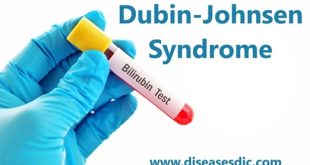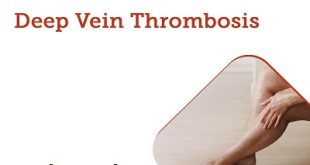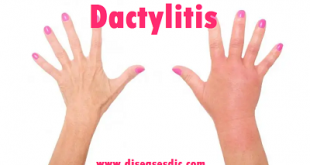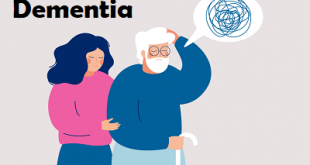What is De Quervain’s Tenosynovitis?
De Quervain’s tendinosis is a painful swelling (inflammation) of specific tendons of the thumb. The condition is also known as de Quervain tendinitis or de Quervain’s tenosynovitis. DeQuervain’s was named after the Swiss surgeon who first described the condition in 1895.
Tendons are bands of tissue that attach muscles to bones. Usually, tendons slide easily through a tunnel of tissue called a sheath. The sheath keeps the tendons in place next to the bones of the thumb. Tendons that easily slide through their sheaths allow the thumb to move without difficulty or pain. The pain may extend from the forearm to the thumb base.
Any swelling of the tendons and/or thickening of the sheaths causes friction. The tendons can no longer easily slide through their sheaths. When this happens, certain thumb and wrist motions become more difficult to do.
Anatomy
A tendon is a band of tissue that attaches muscle to bone.
There are two peroneal tendons in each leg. They run side by side down the lower leg bone (fibula) and behind the bony lump on the outside of the ankle called the lateral malleolus.
One peroneal tendon attaches to the outside of the foot at the base of the little toe (fifth metatarsal). The other tendon goes underneath the foot and attaches to the inside of the arch.
The peroneal tendons provide stability to the ankle when it is bearing weight and protects it from sprains. They also help turn the foot out and stabilize the arch when walking.
What are the causes and risk factors of De Quervain’s Tenosynovitis?
The most common cause of de Quervain’s tenosynovitis is chronic overuse of the wrist. Repetitive movements day after day cause irritation and pain. One common movement that causes it is lifting a child into a car seat. Another is lifting heavy grocery bags by the handles. Other causes could include a direct injury to the wrist or inflammatory arthritis.
You are more likely to develop de Quervain’s tenosynovitis if:
- You are a woman.
- You are 40 years of age or older.
- Your hobby or job involves repetitive hand and wrist motions. This is a very common cause.
- You have injured your wrist. Scar tissue can restrict the movement of your tendons.
- You are pregnant. Hormonal changes during pregnancy can cause it.
- You have arthritis.
What are the symptoms of de Quervain’s tendinosis?
Symptoms of de Quervain’s tendinosis can include:
- Pain and tenderness along the side of the wrist on the thumb side
- Pain that gets worse as you use the hand and thumb
- Pain that appears suddenly or develops over time
- Pain that travels into the thumb or from the wrist to the lower arm (forearm)
- Pain or difficulty when moving the thumb, especially when grasping or pinching objects
- Feeling snapping or popping sensation in the wrist when moving the thumb
Complications
An untreated condition of De Quervain Tenosynovitis may result in worsening of the condition over time and increase the discomfort to the patient by making it difficult to use their hand and wrist properly and limit the wrist’s range of motion.
Diagnosis
To diagnose de Quervain tenosynovitis, your health care provider will examine your hand to see if you feel pain when pressure is applied on the thumb side of the wrist.
Tests
You may be asked to perform a Finkelstein test, in which you bend your thumb across the palm of your hand and bend your fingers down over your thumb. Then you bend your wrist toward your little finger. If this causes pain on the thumb side of your wrist, you likely have de Quervain tenosynovitis.
Imaging tests, such as X-rays, generally aren’t needed to diagnose de Quervain tenosynovitis.
De Quervain’s Tenosynovitis – Treatment
De Quervain’s tendinosis is treated by reducing the swelling/irritation of the tendons and tendon sheath, thereby relieving the pain caused by the condition.
Nonsurgical Treatment
- Splints. A removeable splint that keeps the wrist straight and the thumb still in a comfortable position may improve pain, especially when worn at night.
- Non-steroidal anti-inflammatory drugs (NSAIDs). Drugs like ibuprofen and naproxen can be taken by mouth or applied topically. They may help reduce swelling and relieve pain.
- Activity modification. Avoiding activities that cause pain and swelling may allow the symptoms to go away on their own.
- Corticosteroids. An injection of corticosteroids into the tendon sheath can be effective in addressing the condition by reducing swelling and relieving pain. One or 2 injections has been shown to relieve the condition in 50 to 80% of patients.
Surgical Treatment
Surgery may be recommended if symptoms are severe or do not improve with non-operative management. The goal of surgery is to release the tendon sheath to make more room for the irritated tendons. When done correctly, this can relieve the symptoms of De Quervain’s tenosynovitis without affecting hand/wrist function.
During surgery:
- The surgeon first identifies and protects the nerves that live near the tendon sheath.
- The surgeon then releases the sheath in a way that avoids tendon instability.
- If there is excess tissue (tenosynovium) around the tendons, the surgeon will remove it.
- The incision is then closed, and a bandage (and sometimes a splint) is applied.
Regardless of the treatment, you can usually resume normal use of the hand once comfort and strength have returned. Your orthopaedic surgeon can advise you on the best treatment for your situation.
Home remedies and lifestyle changes
See your doctor if you think you have de Quervain’s. But try these methods at home to feel better and keep your thumb healthy:
- Ice the area to ease inflammation
- Stop doing anything that makes it worse. Avoid repeated motions and pinching moves with your fingers and thumb
- Wear the splint as long as your doctor tells you to
- Keep doing your exercises
Recovery
Most patients with De Quervain’s tenosynovitis do very well and are ultimately relieved of their symptoms with nonsurgical and/or surgical treatment. Fifty to 80% of patients can be successfully treated nonsurgically with splints, NSAIDs, and injections. The remaining patients typically respond well to surgery.
Complications of surgery are rare. Patients with diabetes may be less successfully treated with injections and are more likely to have a surgical complication (infection, wound healing problems, etc.).
Can De Quervain’s Tenosynovitis be prevented or avoided?
The best way to prevent de Quervain’s tenosynovitis is by avoiding repetitive movements. Change your actions to reduce the stress on your wrists. Take frequent breaks to rest if you are using your wrists. Wear a brace or splint on your thumb and wrist, if necessary.
Follow the exercise routine suggested by your doctor or physical therapist. Be sure to tell him or her about any activities that cause pain, numbness, or swelling.
 Diseases Treatments Dictionary This is complete solution to read all diseases treatments Which covers Prevention, Causes, Symptoms, Medical Terms, Drugs, Prescription, Natural Remedies with cures and Treatments. Most of the common diseases were listed in names, split with categories.
Diseases Treatments Dictionary This is complete solution to read all diseases treatments Which covers Prevention, Causes, Symptoms, Medical Terms, Drugs, Prescription, Natural Remedies with cures and Treatments. Most of the common diseases were listed in names, split with categories.







